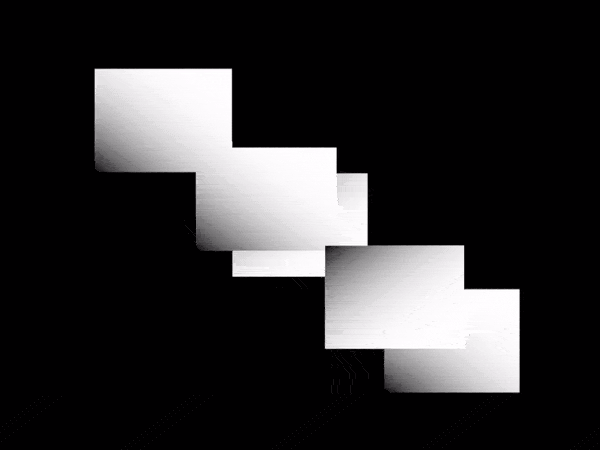A reflection on Processing Community Day Copenhagen 2023
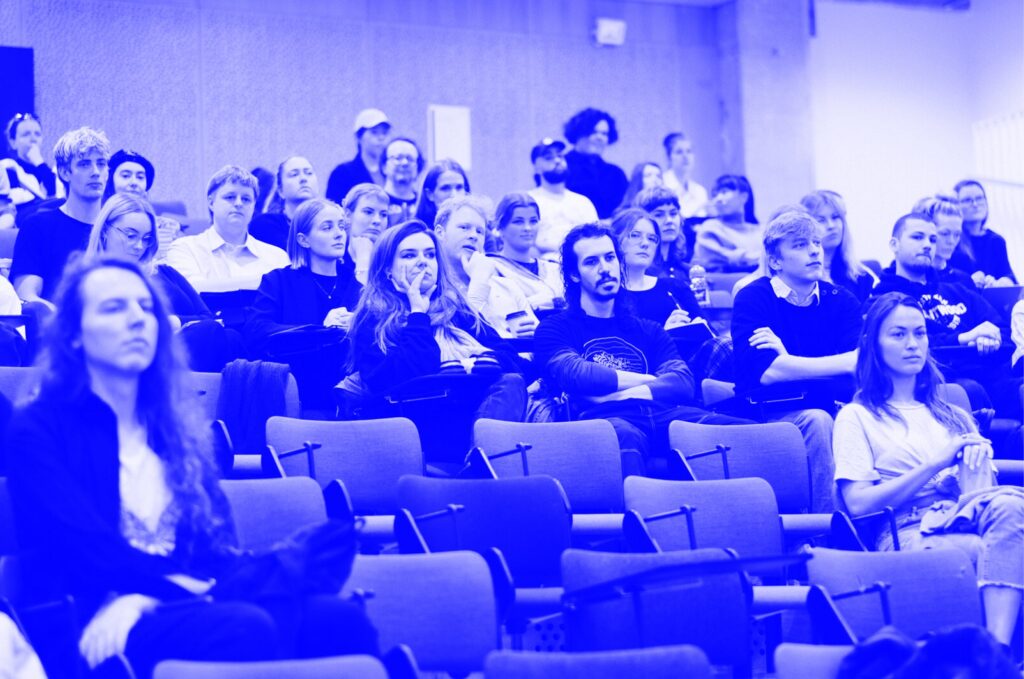
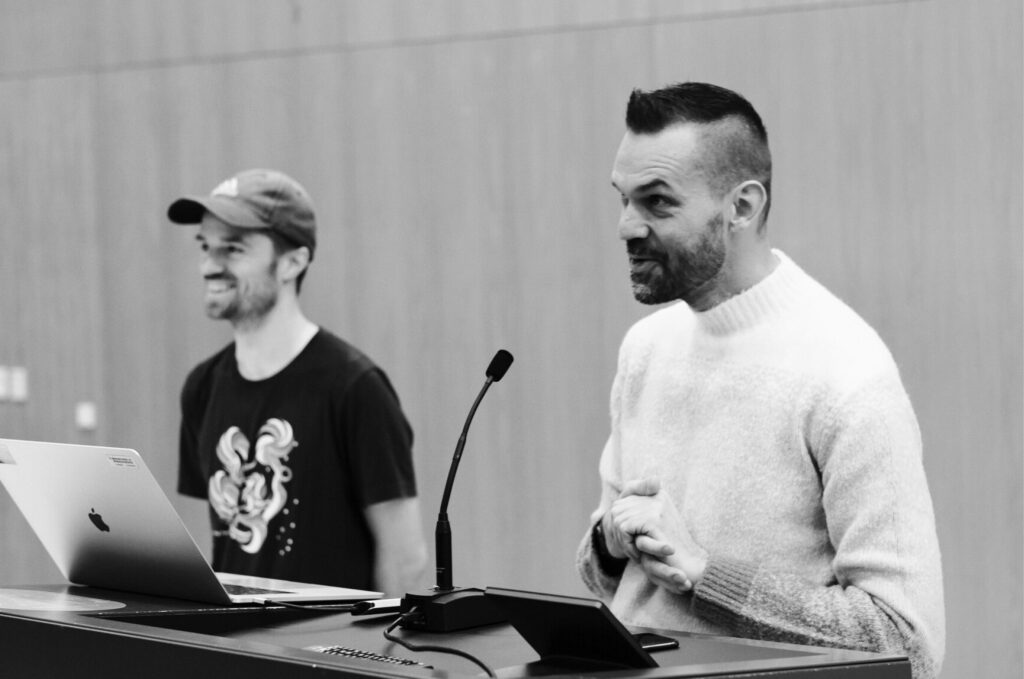
I’ve been travelling a lot in the last few months. Still, it was only during a short stay in Copenhagen a few weeks ago that I realised what connects all my travels in recent years: No matter which major city I’m in, if I wish, there’s always a handful of people from the creative coding community I could meet.
Today’s internet not only invites people to discuss their favourite topics with others online, it also allows them to catch up in the physical world. By now, I have experienced these cross-platform meetings many times and always considered it a great privilege to have these opportunities. Even though you’ve never met in person before, it’s not unlikely that seeing one another feels so familiar that you hug right away. This is just what happened to me recently in Copenhagen, where – shortly after arriving – I met two people with whom I have been in dialogue online for many years.
It’s my first time in Denmark and I’m due to give a presentation at the Processing Community Day. At around 9 a.m., I enter the lobby of the Scandic Hotel in the historic Meat Packing District to catch up with Tameem Sankari . Tameem’s story is quite extraordinary. When I met him a few years ago, he worked in Dubai as a brand designer. Since then, he moved to Copenhagen and specialised in illustration and creative coding. Over breakfast, he tells me how valuable my courses were for his professional development. Motivated by the opportunities that programming promised in the realms of graphic design, he started his coding-journey with YouTube tutorials. As the videos quickly became too technical and were rather irrelevant for his work in design, he found my website and became part of its community. Tameem was particularly interested in the possibilities of visual expression that creative coding offered. My courses actually helped him to get started and since then, he built up an amazing portfolio: His generative illustrations were even published in The New York Times, Type01 and Wired Magazine. It’s no surprise that I’m incredibly proud to be part of this amazing journey and I love to hear that Tameem will also be talking about his work at the PCD the next day.
A few hours later, I meet Stig Møller Hansen. I’m quite sure that no other name is mentioned on my platform more often than his. Stig is one of my most important mentors, sparring partners and supporters. I owe him a lot – among other things, also this trip to Copenhagen. As one of the organizers of the Community Day, Stig invited me to come and talk about my journey and experiences with Processing. His dissertation centres around the question how programming can be efficiently taught in the realms of graphic design. An interesting text that had a great influence on my work and the expansion of my platform. As with Tameem, Stig and I meet in person for the first time and spend our lunch talking about the latest developments in the Processing ecosystem. Afterwards, he shows me some of the most beautiful spots in Copenhagen.

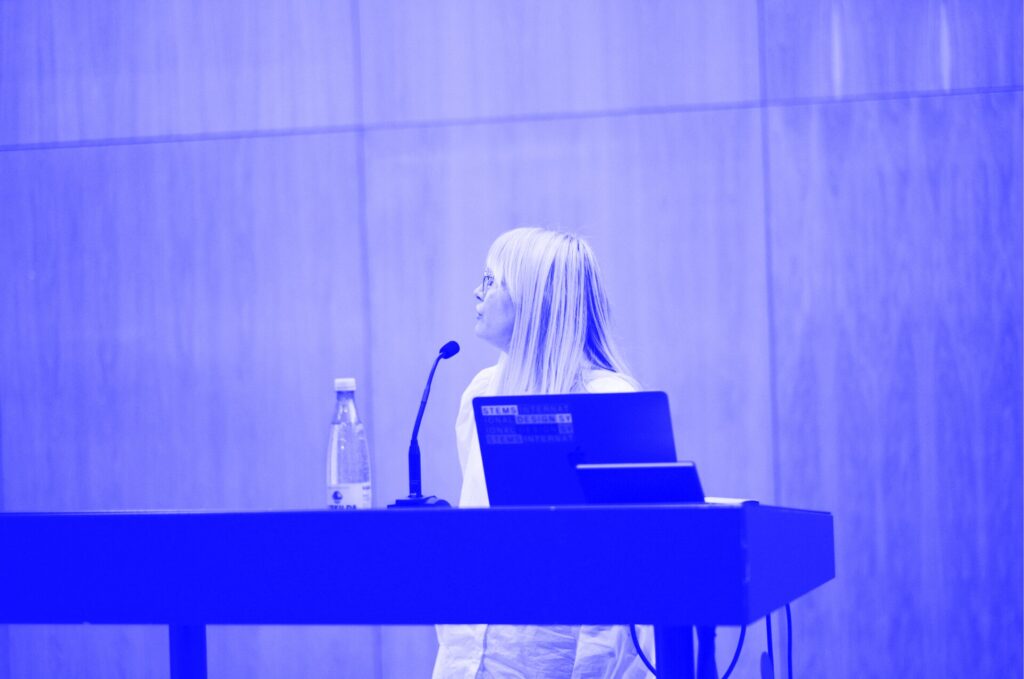
One day later, I enter the University College Copenhagen via a wide staircase. Typically scandinavian and suitable for the current occasion, the building has an elaborate and very modern design. As I enter the auditorium, I see the huge projection screen that I will later give my lecture on. Before I go on stage, I get to know Rune Madsen, whose work I’ve been following for years. His essay on programmed design was an important source of inspiration for me around 2016. Today, Rune and his partners run Design Systems International, a design studio that – among other things – has redeveloped Processing’s visual identity and website – a huge project once you realize how complex the Processing.org reference pages are. Next to Rune is Andreas Refsgaard, whose work I have also been following for some time. He is an artist and creative coder who works experimentally with algorithms and machine learning.
The event starts and I’m the first speaker: “Creative Coding as a Lense” – the title of my presentation shines down on the audience and I step onto the podium. One of my first slides shows the question that got me into coding many years ago: “What times are we living in?” I found the answer in my personal history: my father was a indepenent designer for all his life. When he started his own agency in 1985, he embarked on a thirty-year rollercoaster ride that sent him through breathtaking highs and lows. Watching his development from the sideline as a child, teenager and young adult, I was fascinated and irritated by the rapid pace of technological development, whose influence on the design world seemed to be constantly increasing.

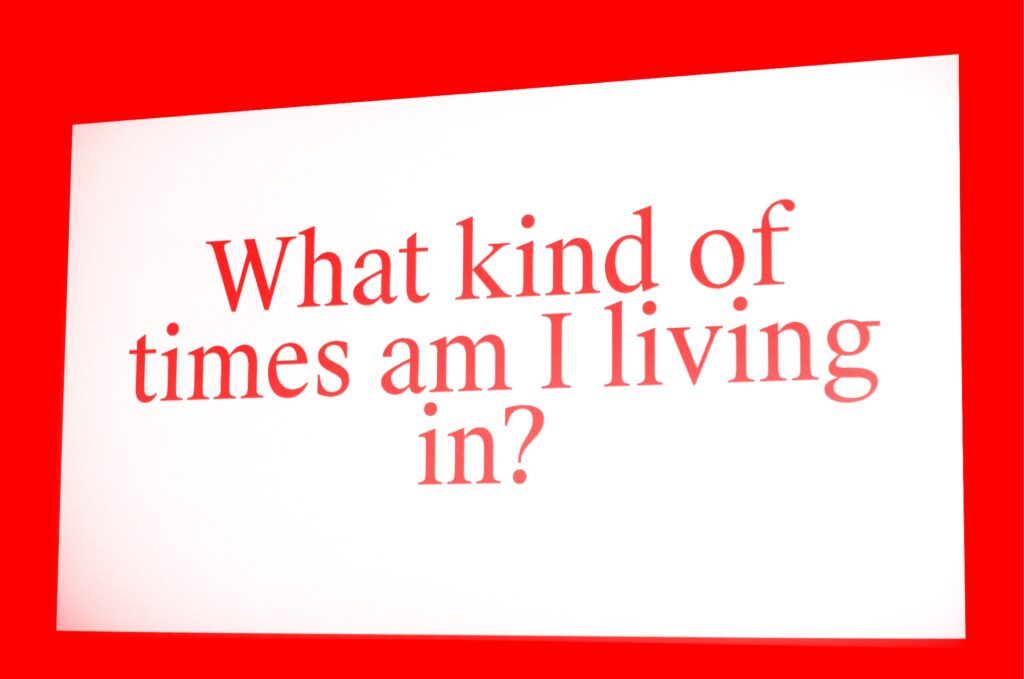
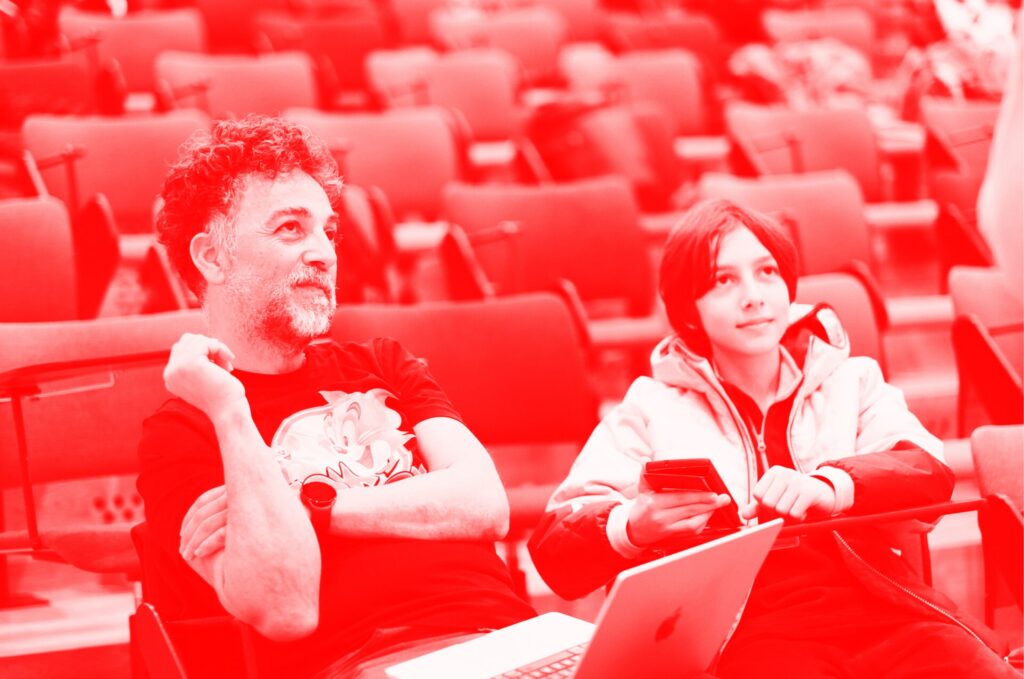
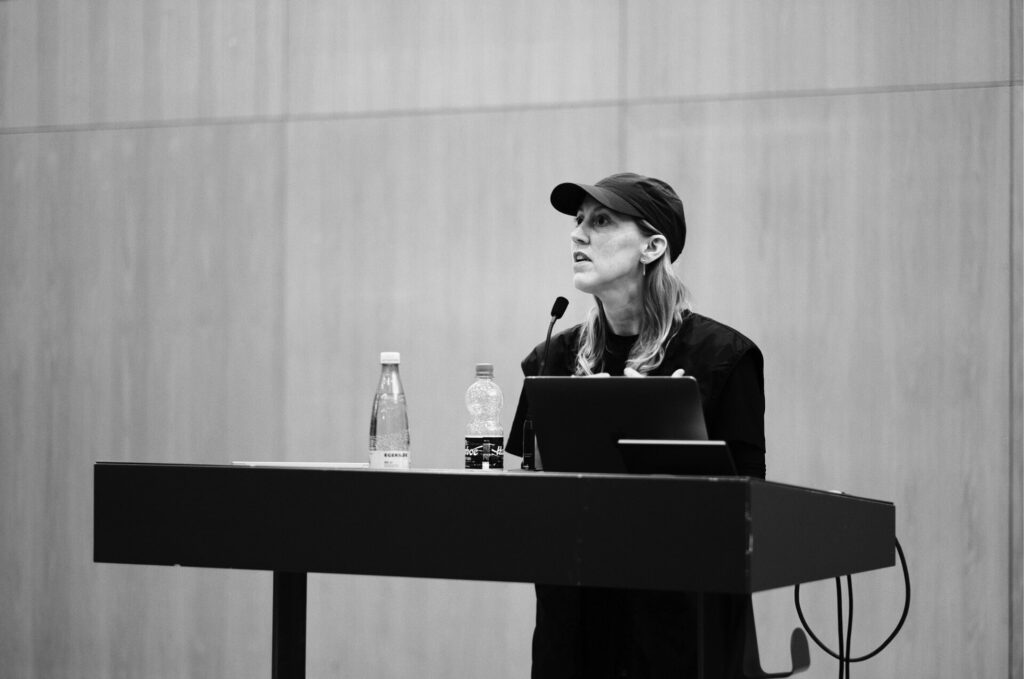
Looking at today’s tools, it seems almost unimaginable that design offices in the mid-80s really managed working without computers. And while computers were still anything but a given in small companies in the early nineties, a few decades later almost every area of life has been digitized. In describing my experience I aim to show the audience that also we as designers have the responsibility to critically review new technologies and technological progress that enters our day to day lives. And creative coding has proven to be a method that not only enriches practical work in design, but can also sharpen exactly this critical eye on technology, so-called technological progress and how we deal with innovation.
Of course I follow the subsequent lectures with excitement: Tameem talks about his path from brand designer to creative coder and gives an insight into his illustrative works, which have a high recognition value thanks to their stringent ASCII aesthetic. Selçuk Artut gives a lecture on the intersection of creative coding and Islamic art. Anna Shams Ili talks about her self-initiated Creative Coding Meetups and Cursor, an online magazine in Copenhagen that is created variuos writers and activists who critically engage with technology from a feminist perspective. Majken Overgaard talks about how the disappearance of female artists from art historical data sets in the age of AI can lead to alienated and one-dimensional perspectives on the past. Frederik Krogh shows his portfolio of visual identities in which code plays a major role and the young designer Astrid Jakobsen talks about projects she has developed with Processing and p5.js. I particularly like her fictional identity for the city of Seoul because it cleverly uses the potential of generative design by using fictional data to visualize the movements of people in the city.
The last talk is by Lisa Apers, a UI/UX designer who found her way into the world of creative coding a few years ago and discovered new questions for herself. It was she who recently developed a generative visual identity for Creative Coding Utrecht – one of the most vibrant creative coding communities.
When I enter the plane one day later, I am extremely grateful for having the chance to meet so many great people. The numerous encounters before, after and during the Processing Community Day showed me once again how enriching it is to be part of a community. Processing has a long history that is reflected in the work of each and every coder. By now, it has developed from a piece of software into a global, decentralized community that could hardly be more diverse and which I am incredibly proud to be a part of.
Now, I’m taking the ideas, impressions and contacts from Copenhagen with me to Barcelona and I’m excited to see what will develop from them in the coming months.
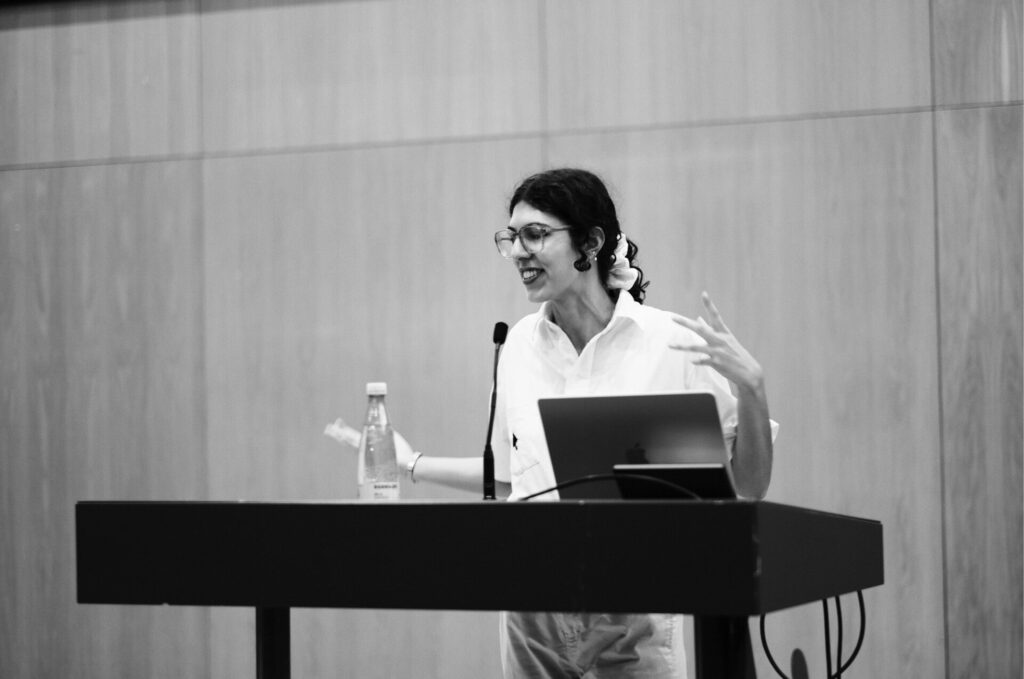
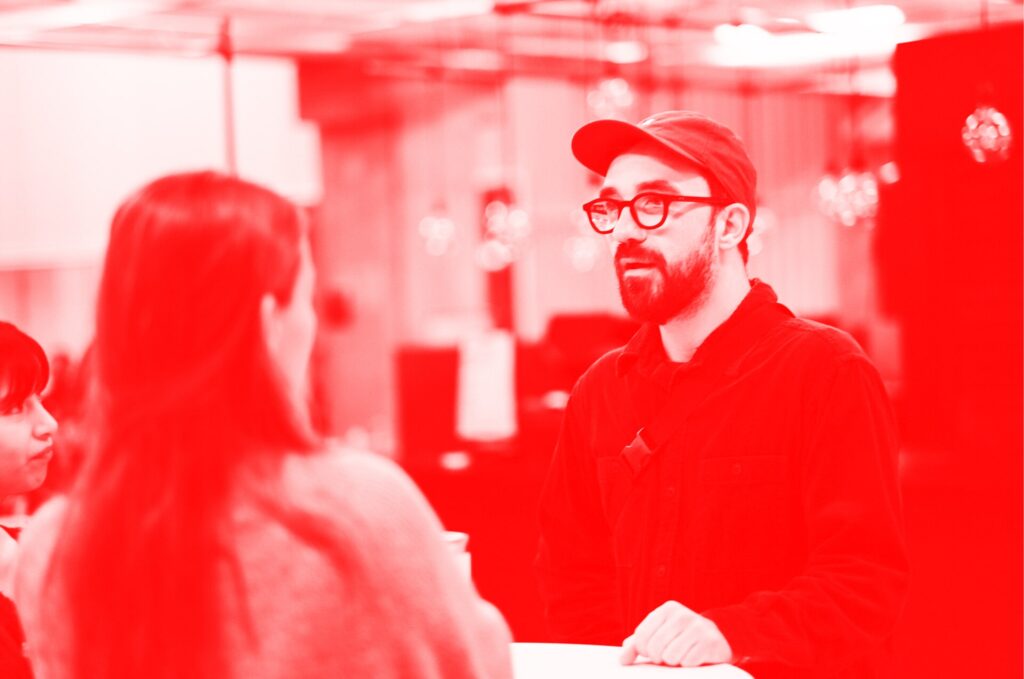
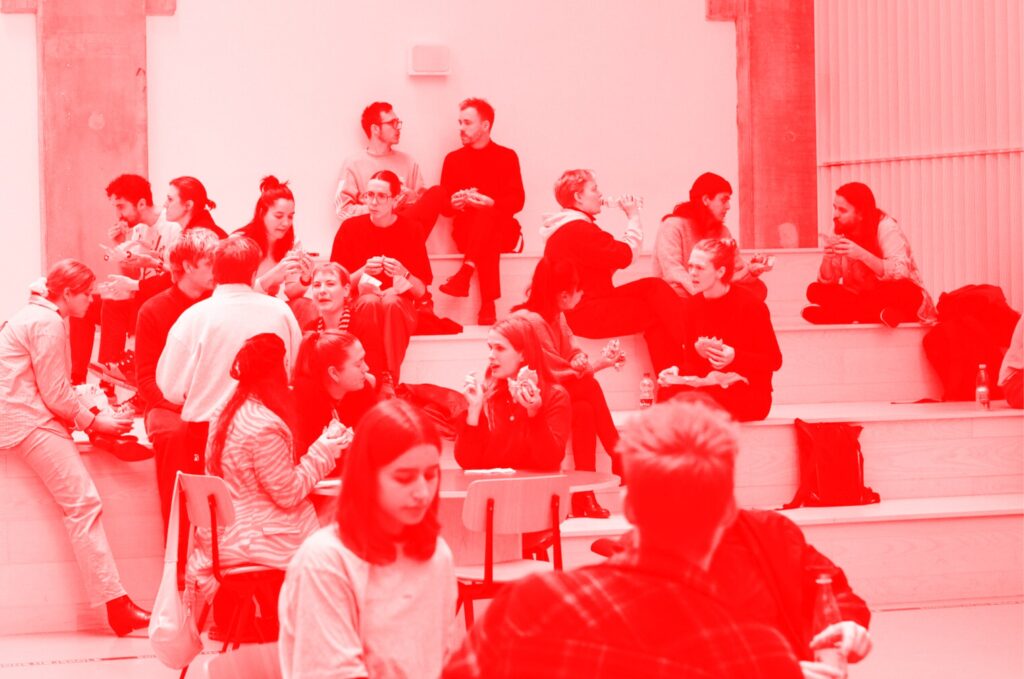
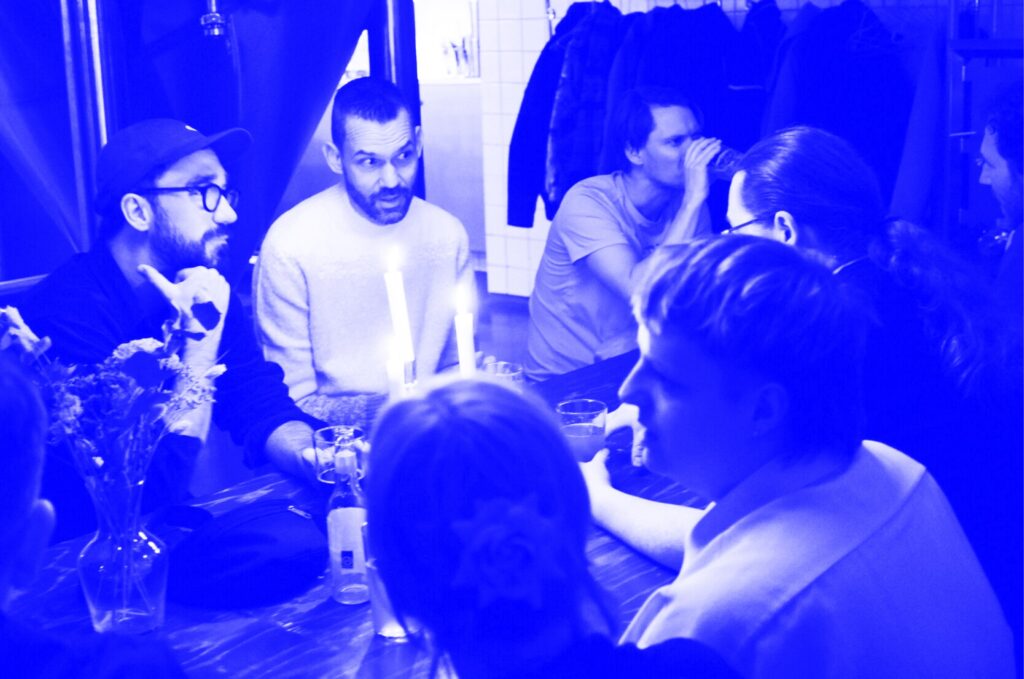
- Photos: Rune Madsen
- Editing: Larissa Lenze
- Article design: Monika Pufflerova
Related
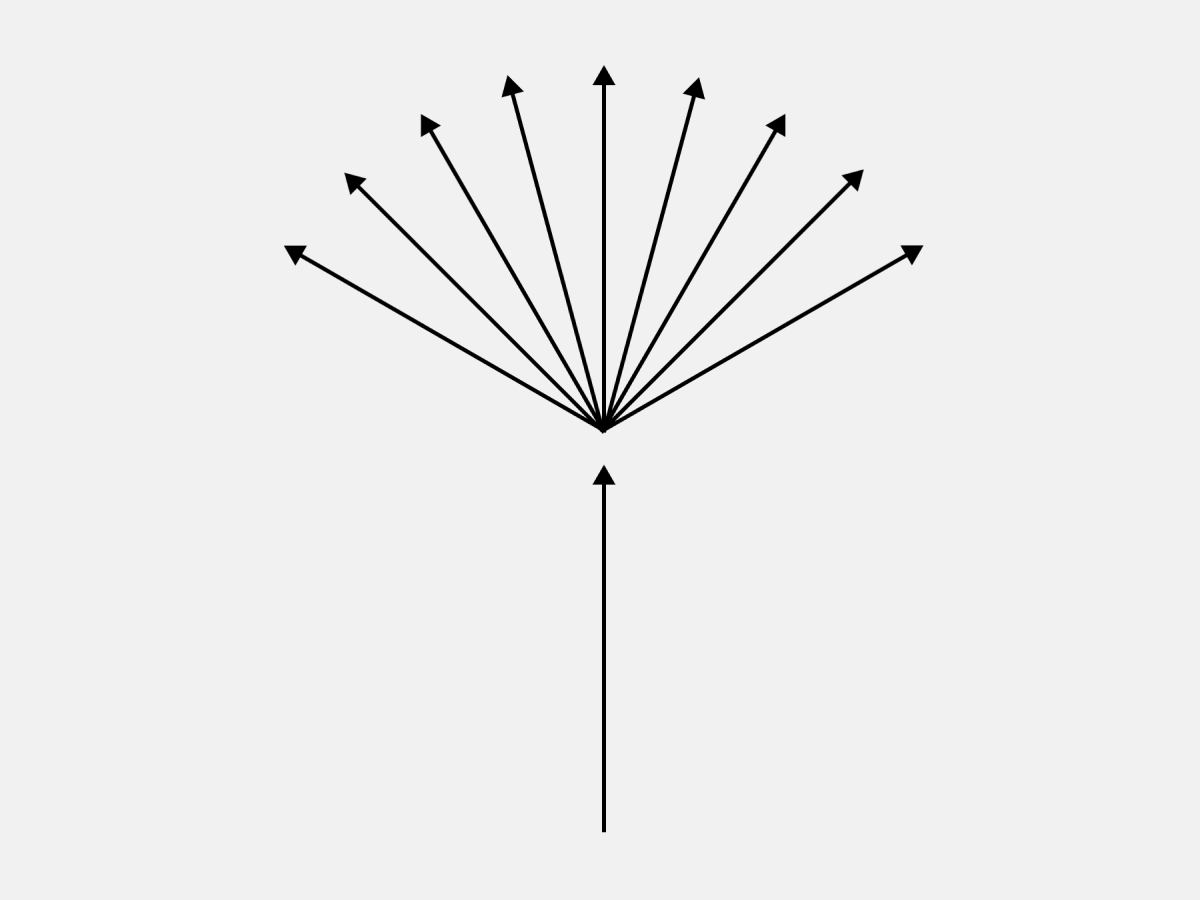 On Teaching
On Teaching
Learning creative coding is difficult. Just like learning to play the piano. Both can fill a lifetime. Both are deep […]
 CodeCrafted
CodeCrafted
When I completed my bachelor’s degree in 2013, coding was considered a marginal topic. There was a dark spirit at […]
 Is my Instagram profile shadowbanned?
Is my Instagram profile shadowbanned?
I am asking myself: Is my Instagram channel possibly shadowbanned? Since I speak out more clearly against the cheeky, shady […]
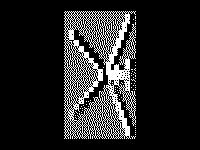 Diogenes meets Demo Festival
Diogenes meets Demo Festival
Below is the written version of my talk at DEMO Festival in Amsterdam, January 2025. I’ve also recorded an audio […]
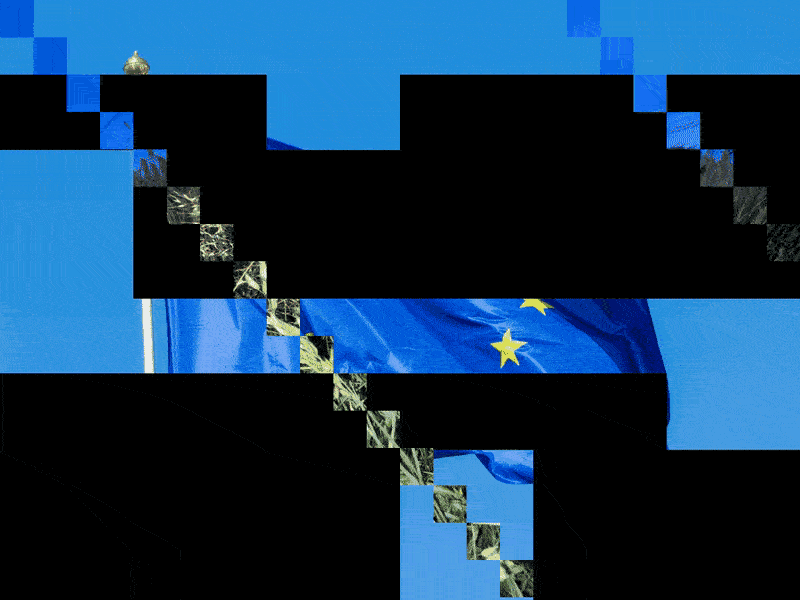 Design is dead – long live Design!
Design is dead – long live Design!
I have been observing developments in design for 40 years. That may sound strange, as I’m only forty myself, but […]
 I am writing a Book
I am writing a Book
Hey you! I hope you are doing good. It’s crazy what times we live in, isn’t it? It feels it […]
 Creative Coders against AI Colonialism
Creative Coders against AI Colonialism
It is 2025, almost three years after the “AI shock”, when ChatGPT and Dalle2 suddenly captured humankind’s attention. From then […]
 Demystify Technology
Demystify Technology
One of the guiding principles of my teaching and in the development of this platform is the phrase “Demystify Technology”. […]
